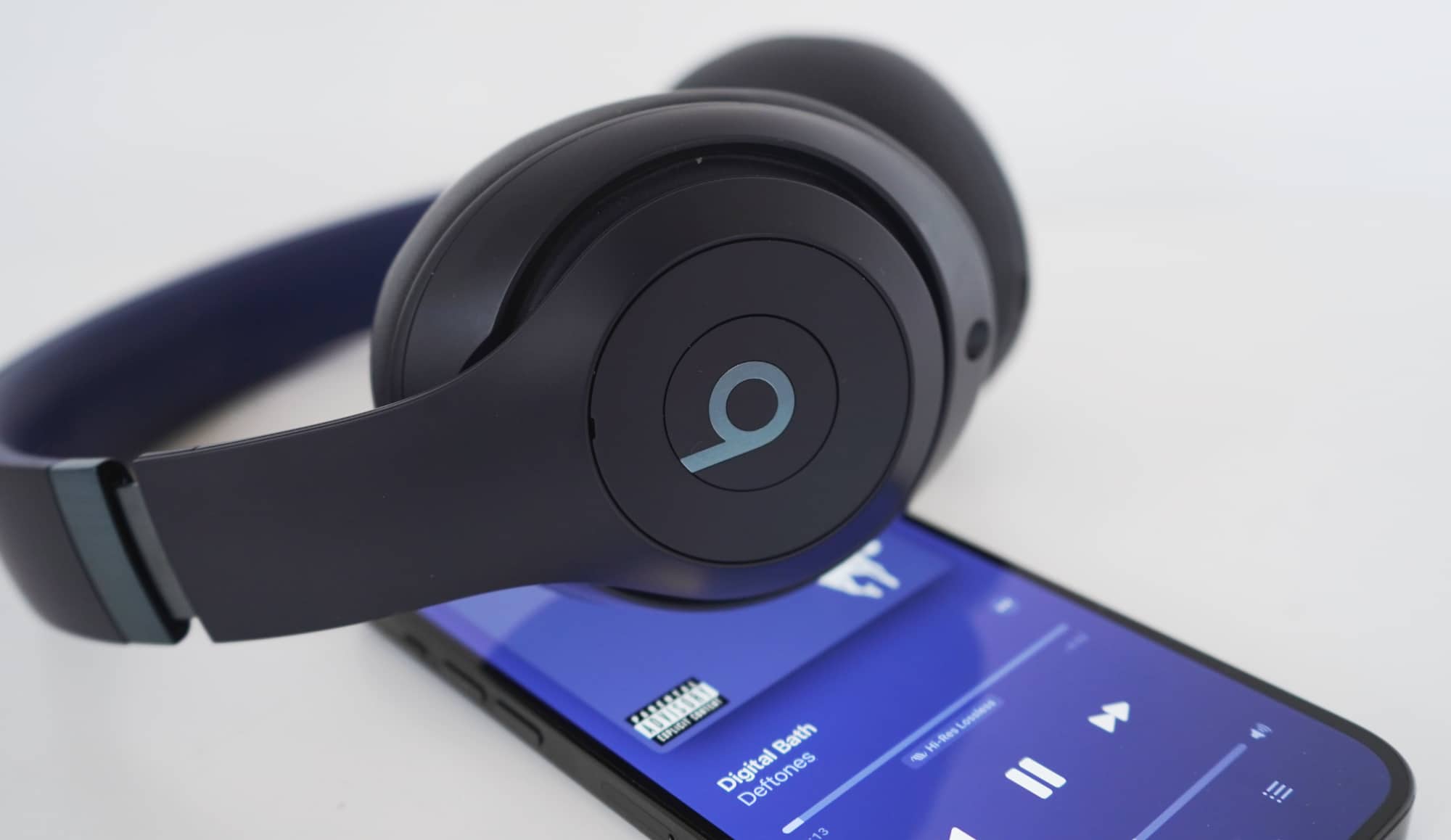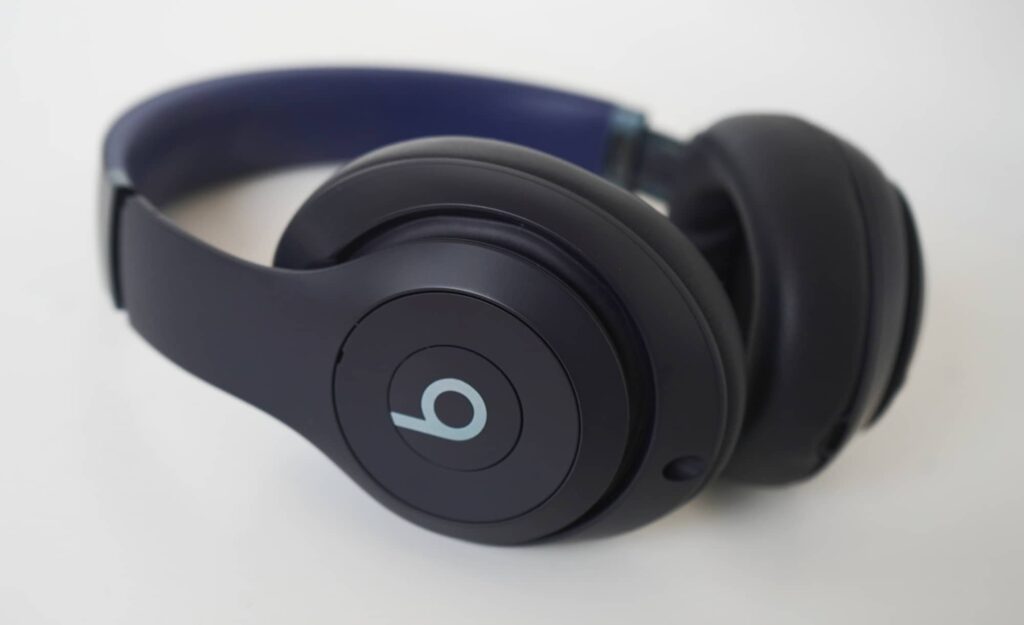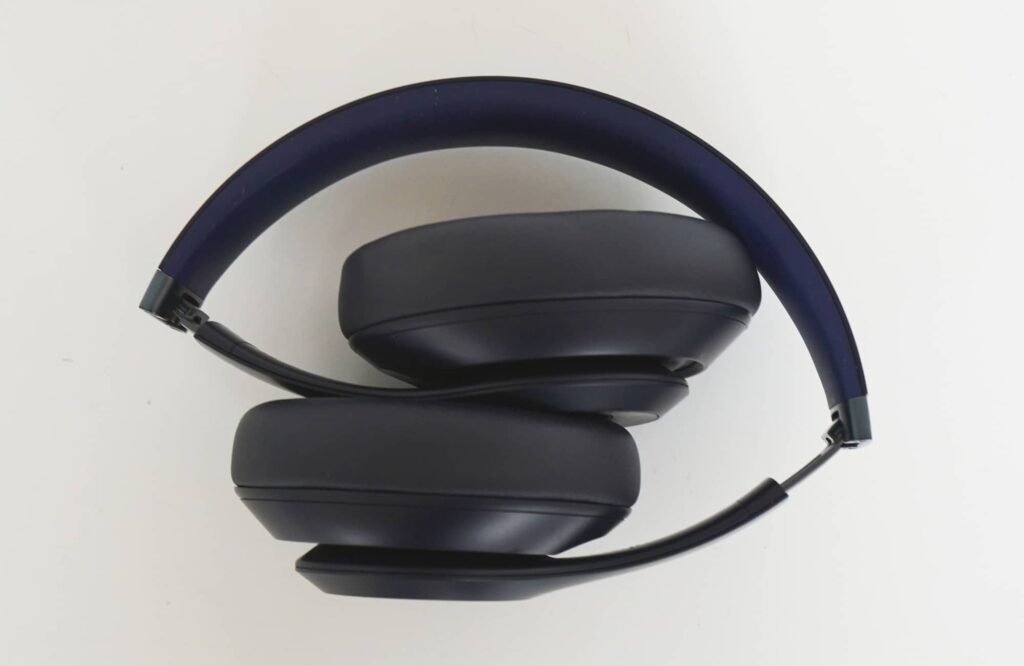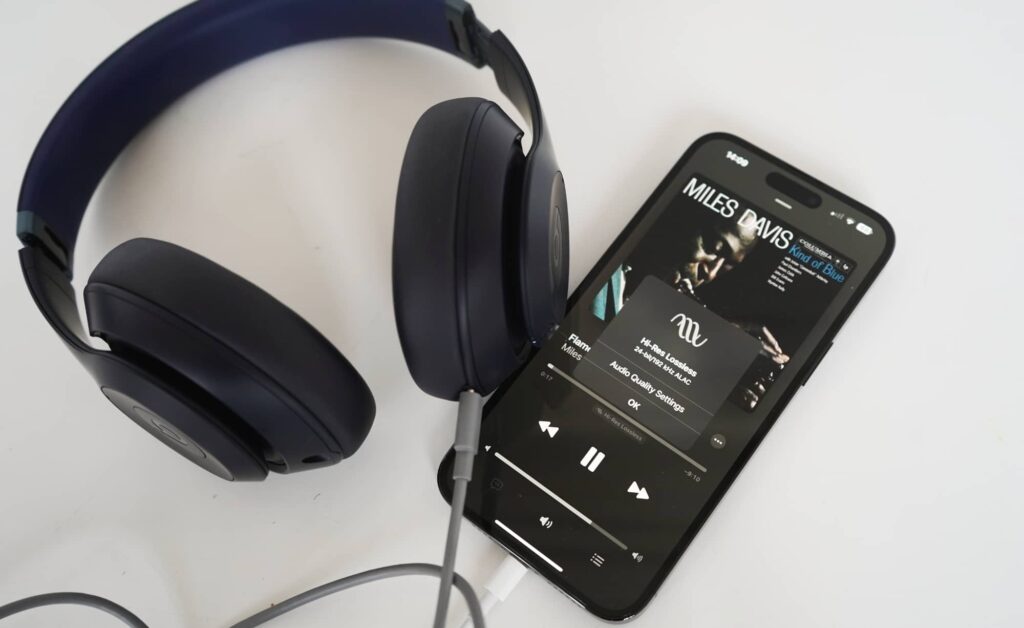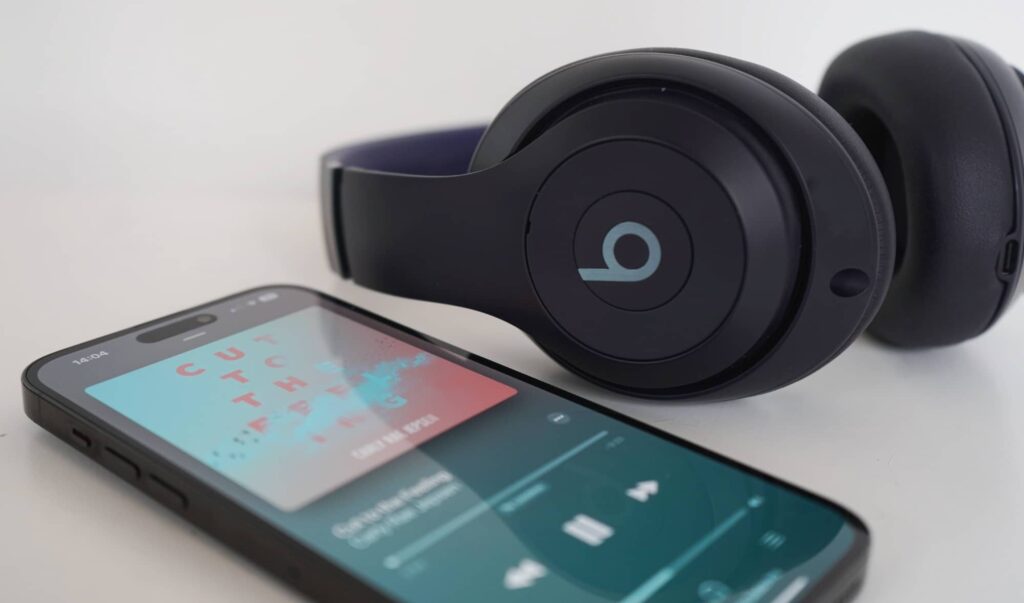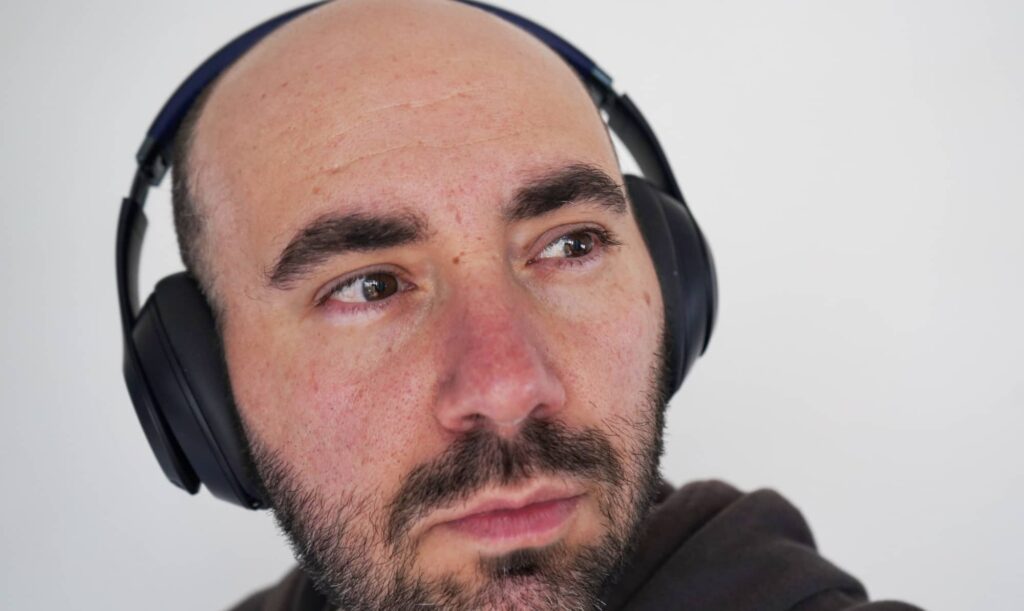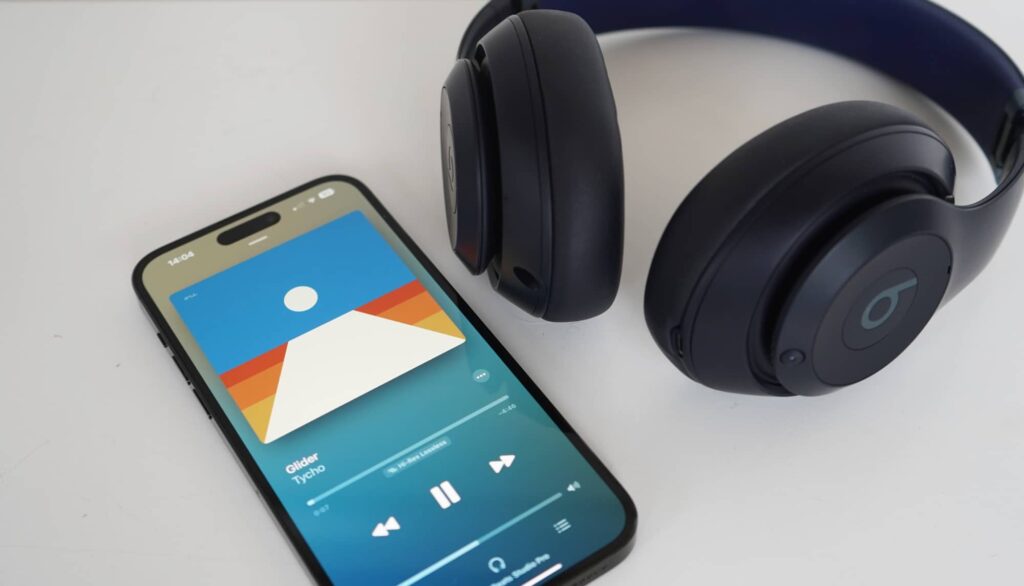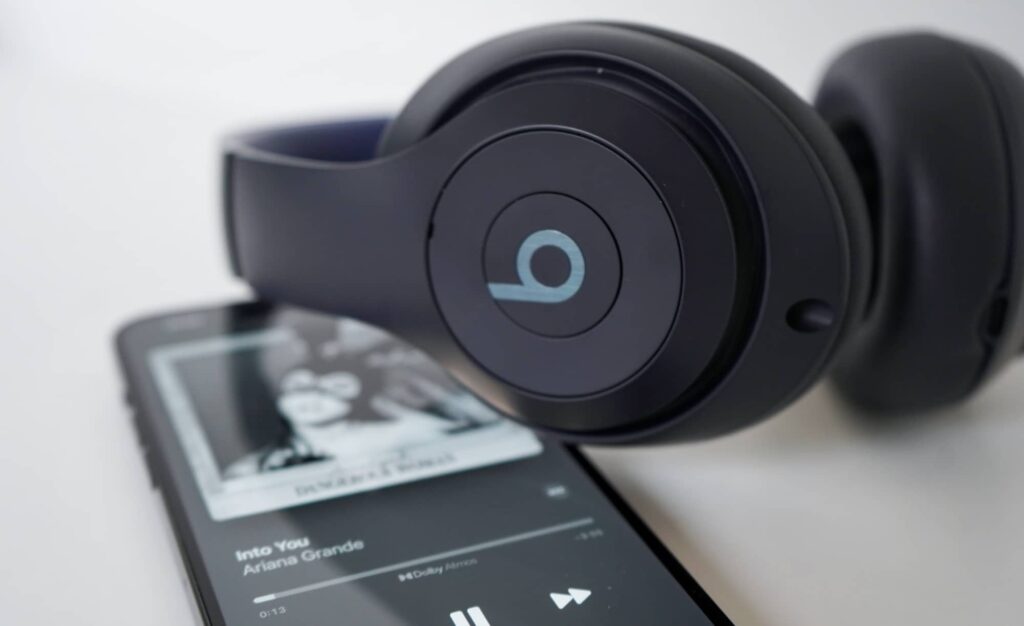Quick review
The good
The not-so-good
Armed with head tracking, active noise cancelling, USB-C audio, and more, the Beats Studio Pro might just be the most platform friendly headphones around.
With the way our desk looks lately, it’s pretty clear everyone has choices when it comes to picking a pair of headphones. Wireless and cordless and corded aplenty, you have a lot to pick from, and nowhere is this more true than in noise cancelling headphones.
Whether you crave a pair for travel, removing the drone of public transport on the day-to-day commute, or just quelling sounds at home and securing yourself inside of a sound-proof bubble, there are plenty of models to choose from in Australia and the world.
Lately, much of what we’re seeing is focused on the in-ear, but if you spend a little more, you can find a pair that sits on top and around, covering the ear with a larger style.
Over-ear headphones tend to cost a little more, but come with a big emphasis on isolation and sound, and it’s an area Beats has been playing in for some time. Mind you, it has also been some time since we saw an update from Beats in this category.
Fortunately, 2023 is when we’re seeing a new model, as the Beats Studio Pro looks set to update what we saw in the Studio 3 a good five years ago.
Is this the update Beats needs, and can it beat the competition?
Design and features
A slight evolution from a pair we last seriously spent time in several years ago, the Beats Studio Pro don’t tremendously break new ground as the Apple-owned brand keeps what worked last time and refines it slightly.
While most headphones these days are all about the minimalism in design and the light touches — flat colours, no big design flourishes — Beats keeps the look of a pair of Beats headphones, much like it did in the Studio 3.
Our blue Studio Pro review unit came in the typical plastic casing Beats has been known for, complete with the obvious “b” logo sitting atop a button and ring combo that works for pause and play when you press the former, and volume control on the top and bottom of the latter.
It’s a design that works and clearly says “you’re using a pair of Beats headphones”, though for something that doesn’t appear as often as it used to, Beats has left in the foldable design, allowing you to collapse the headphones down, something Sony got rid of in the WH-1000XM5 as well as Bose in the Noise Cancelling 700. Foldable headphones seem to be disappearing these days, but Beats keeps the effort on portability going.
Inside, there’s a 40mm driver with stronger magnets than previous Beats headphones, while the company keeps its adaptive noise cancelling tech in play supporting both noise cancellation and a transparency mode.
You’ll have support for both wireless and wired sound, the former using Bluetooth and the latter via two connections: either a 3.5mm headset connection or a Type-C cable for lossless audio. That last one is a feature very few headphones offer direct support of, including a built-in digital-to-analogue converter to get you lossless audio direct from a phone to the headphones.
If you like keeping tabs on your gear, Beats has also included support for finding services, with Apple’s “Find My” tech working here as well as the Google equivalent.
Outside of these features, the headphones fit inside of a small black pouch that also houses the couple of cables you might want to carry, including a Type C cable that can be used for listening or charging. Yes, the Beats Studio Pro charge via USB-C. Hallelujah.
In-use
Portable and easy to carry, the Beats Studio Pro come with a case to keep your cans and cables, but even if you skip the fabric case, you’ll find the portable design is super handy. It’s something Sony moved away from and we have no idea why; being able to pack up your headphones into a small size is a winning feature more headphone companies need to embrace.
Wearing them is also quite comfortable, thanks to plush leather cushions that hug the ear nicely. It’s a nice comfortable ear-pad, though not necessarily as comfy as what Bose has offered in the past, once seen as the comfiest noise cancelling headphones around.
There also aren’t any touch controls here, which depending on how much you like or hate headphone touch panels may be a decider for you. I don’t mind them, but they can be divisive given how they’re prone to skips or volume issues at times.
In its place is an old Beats standard: two button levels. There’s the main “b” button on the left can for pause and playback, while the ring around it supports a top press for volume up and a bottom press for volume down. That’s a fairly easy way to control your headphones, though track skipping will mean remembering double tapping and triple tapping, just like the good ol’ days of headphones.
Finally, there’s the power button on under-side of the right headphone, which handles power (duh) and cycling through noise control modes when you double tap it.
For the most part, the controls are easy to use and only require you to remember a few instructions, but there’s an extra use-case here: wired to your device.
Wired sound
It might seem strange to cover wired sound in a pair of wireless headphones, but there are great reasons why with the Beats Studio Pro: you get two choices of connections.
If you have a 3.5mm headset jack, you can quickly plug in the Studio Pro in a pinch, which could make them handy on a flight. Easy, right?
The more intriguing use-case for cording up the Studio Pro is with a Type C cable, with the headphones supporting Type C audio and basically including a digital-to-analogue converter (DAC) in the headphones.
While not the first time we’ve seen this idea, the $549 Beats Studio Pro is much more wallet-friendly than the Focal Bathys, which marry ANC and a wired high-res DAC for $1199.
Granted, this is a small bunch who will end up using Type C USB for high-res music, but given that you can find lossless music on Apple Music, not to mention the lossless FLAC support on Android or MQA via Tidal HiFi Plus, it makes a lot of sense that Beats has thrown support behind Type C sound. It’s just an extra that helps the headphones stand out.
As it is, we can see musicians getting behind it, listening to music in a higher quality on music services provided they plug in a cable. It makes sense to us, anyway.
Performance
We’re not sure that everyone will listen in via the wired option, but it’s definitely a choice.
The more likely option is without wires and with active noise cancellation switched on, which is how we’re reviewing these headphones using our Pickr Sound Test, which you can listen to for yourself.
That starts with electronic, which delivers the sounds of Tycho and Daft Punk delivering a relatively balanced sound, minus some of the earthy sounds in the more warm headphones out there. This is a very different pair of headphones from the overly bassy style that launched Beats, with a focus on balance where it can, even if it can feel slightly brighter.
The sound is good, comfortable, and enjoyable, continuing into the sounds of Carly Rae Jepsen and Ariana Grande, as more pop and soulful tracks are loud and dynamic, but again just a bit lighter than we expected.
Whereas flagship ANC cans tend to push for warmer sounds lately, the Studio Pro don’t seem to, restraining the bass slightly, a feeling you get in FKA Twigs’ “Two Weeks”, which seems to calm the bottom end from its typical guttural sound.
Into rock, the restraint of bass is more evident, delivering a lighter touch that delivers firm and crisp highs amidst comfortable mids, and an acceptable amount of bass that yearns for just that little bit more.
In fact, that feeling is also evident in playback of jazz and classical, where the rounded sounds of a walking bass line or a few instrumentalists lacking an over amplified sense of track mixing aren’t delivering a heap of bass by themselves.
You’ll get the way it was recorded, sure, but the bottom end won’t be as tight or dramatic as it might have been initially heard. It’s good but not great, delivering a restrained sense of balance in these genres.
The more we listen to the Beats Studio Pro, the more they seem to tell us they’re more ideal for modern music engineered for today, compared to the minimalist engineering of yesteryear. Newer tracks and albums will likely fare better, and you may also get the head-tracking effect, as well.
Interestingly, while standard stereo delivered acceptable balance with slightly restrained bass, head-tracked Atmos managed to sound even more different. By comparison, the sound through the Studio Pro came off even brighter with some parts of the sound shallow.
Thinking it was just our ears, we tested against the AirPods Max to see the difference and found in Atmos, the Studio Pro were brighter. They weren’t like this in stereo, but the audio processing certainly seems like it in Atmos.
Granted, this could be specific to the tracks we were testing with, but even jumping between the Studio Pro and AirPods Max revealed just how dramatically different the two were. They sport similar features, but a different sound.
Noise cancellation
Then there’s the noise cancellation side, which sees Beats using adaptive cancellation to create as filter that keeps on monitoring and changing at up to 48,000 times per second. Sounds impressive, right?
In practice, the active noise cancellation offered by the Beats Studio Pro is better than the Studio 3, which five years on makes sense, but still doesn’t seem quite as advanced as what either Beats or Bose offers.
It’s good, and for flights, trains, and general walkaround use, but whereas other competitors seal your head in a bubble, the Beats Studio Pro lets some of the outside world bleed in. There isn’t much, but the whisper of a train’s engines make it in, as does some of the wind when you’re out and about.
In short, the ANC is good, just not the best, and you can’t tweak it. There’s no app to let you make changes to the degree the noise cancellation is working, so you just kind of have to trust Beats is doing the best it can.
Battery
Over in the battery life department, Beats won’t exactly win awards for noise cancelling without a power cable, getting slightly more than Apple’s AirPods Max, but not necessarily enough to count.
You’ll find up to 24 hours with ANC in the Beats Studio Pro, but you’ll gain 16 more hours if you switch active noise cancellation off. That’s a pretty sizeable difference, though it does at least cover one international trip, and the USB recharging is easy enough, with a ten minute charge getting you 4 hours of playback.
By comparison, Sennheiser’s Momentum 4 Wireless more than doubles that at up to 60 with ANC switched on. In short, the battery life is acceptable, but not exactly mind-blowing.
Value
Pricing is a little more normal, though, seeing the headphones hit the $549 mark in Australia, which isn’t bad but also isn’t amazing.
Comparatively, high-end noise cancelling headphones from the likes of Sony, Bose, and Sennheiser will fetch this price point, with some going higher. Sony’s cost more at their recommended retail price, and the same is true with Apple’s AirPods Max, which can feel pitched at audiophiles rather than everyone.
Beats is going after more than just the audio-obsessed, with their celebrity-connected image delivering a headphone for everyone, and so the slightly lower price point makes sense.
In terms of value, though, you’re possibly paying for the branding, because not everything is as high-end as you might expect.
Beats Studio Pro vs the competition
That value argument can make the Beats Studio Pro a little more cumbersome, especially when you compare it to what’s out there.
Take the current benchmarks in the WH-1000XM5, which costs $549 at the moment and offers excellent sound and performance, and basically just misses out on the USB-C DAC and head-tracking on Apple. It was added on Android only recently, but you’ll need Tidal to play.
Sennheiser’s Momentum 4 also offers a compelling choice at a little more ($580), delivering similar features to the Sony option, but with twice the battery life. Both are high up there in terms of performance, as is the Bose QuietComfort 45, which retails a little under at $499 and is the only competitor to fold up.
Interestingly, the Beats Studio Pro might just take on the Apple AirPods Max best of all, especially given they both support head-tracked spatial on Apple devices, active noise cancellation, and support for Apple “Find My” like with other Apple products including the Air Tag. The AirPods Max retail for $899 making them quite a bit more than the $530 price tag of the Studio Pro, and very different headphones altogether.
What needs work?
Take the noise cancellation, which will do the job and quell some noise, but isn’t quite as effective as other pairs on the market. It doesn’t seem to be as strong as the in-ear cancellation offered by either the Bose QC Earbuds II or Apple AirPods Pro, which both use chips and constant analysis to deliver their cancellation prowess.
It’s interesting, because we’d expect Beats’ adaptive cancellation technology to deliver the superior result, but it doesn’t appear to have quite the edge. Repeatable sounds are scaled back the way you’d expect, but we found traffic and transport noise bleeding in slightly, even when the Studio Pro were practically hugging our skull.
The active noise cancellation in the Studio Pro is fine and a shade better than what you can find in the Studio 3 from a few years ago, but five years of difference hasn’t made the new model stand out by leaps and bounds. Certainly not against what’s out at the moment.
You’ll also miss out on a feature you might be able to live without: ear detection. This is one of those things not everyone cares about, forcing the music to pause when the headphones come off your head.
It’s handy when you’re about to talk to someone, because you don’t have to reach for your phone or wearable to pause and can simply let the headphone hardware do the job for you.
Except you can’t in the Studio Pro, because it’s not here. Minor as it is, it’s still not here.
And neither are replaceable pads, another niggle you might find frustrating if you plan to own the headphones for longer than two years.
As I was reviewing the Beats Studio Pro, I spied someone on the train in front of me wearing the Beats Solo Pro, and remembered one of the problems Beats headphones typically has: no replaceable pads. I have no idea who she was, but her torn and broken pads were visible even a seat away.
That could well be the fate of the otherwise ultra-comfy Studio Pro pads, because they’re not replaceable either. Strange as it is, Beats hasn’t learned from its Apple ownership that pads could be replaceable with some simple ingenuity. While the AirPods Max use a magnetic element to make its pads replaceable, the Beats Studio Pro pads are built in.
Mind you, there’s not a lot of difference here with the competition. The other obvious benchmark in the Sony WH-1000XM5 doesn’t offer replaceable pads, either, while the Bose QC45 does even if doing so is a pain.
Final thoughts (TLDR)
Issues aside, there are things I really like about the Beats Studio Pro, and I suspect you will too.
Kind of like almost-AirPods Max, they stand out in many positive ways, such as the price tag, the Android support, compact fold-up design, and the support for both USB-C audio and head-tracked spatial. Not even’s Apple’s most expensive pair of headphones offers either Android support or fold-up design, even though they’d definitely be desired there.
Beats has built something more platform friendly than you might expect. A friend to Apple and Android alike, these are headphones for any phone.
There are still things we’d love to see included, and certainly for the price, we’re surprised Beats hasn’t. Features like a lack of ear detection and replaceable pads surprise us, but they’re not total dealbreakers. Even the slightly brighter sound doesn’t deter us.
Ultimately, the Beats Studio Pro are feature driven, offering versatility for owners of both phones. Apple owners with an Apple Music account will dig the head tracking, while Android owners will dig the app, even if they miss out on the spatial.
And both will likely appreciate the price: at $549, these almost AirPods Max are much more wallet friendly overall.
We’d definitely tweak a few things, but there’s something to look forward to here. The Beats Studio Pro are more than worth a look.



